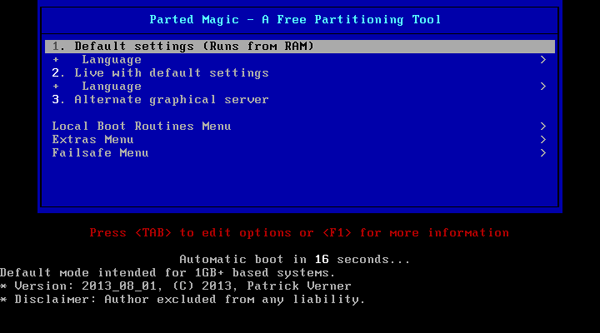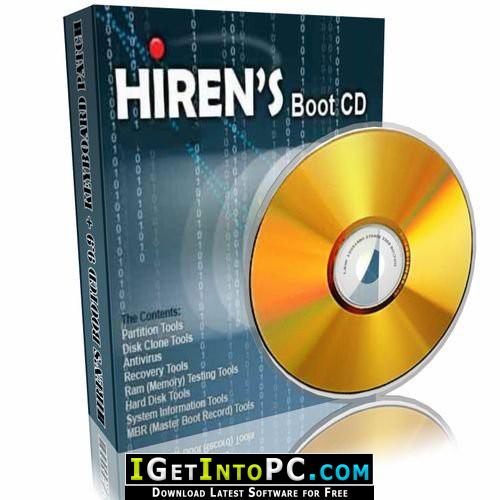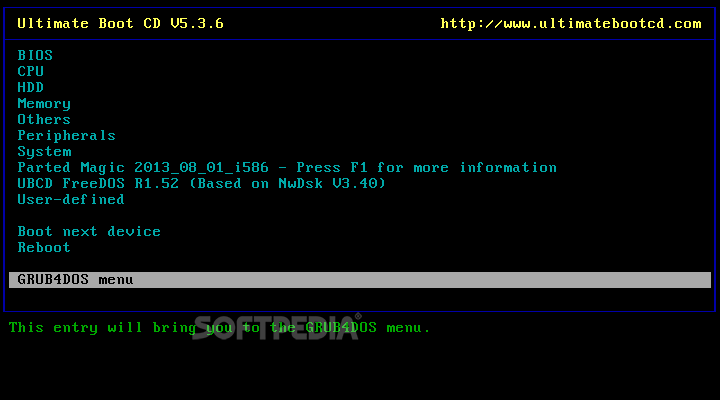

The fourth parameter is the name that will be displayed under the submenu for the tool. The third parameter controls what to do after the program terminates: -$: go back to the menu -$$: drop to the command prompt so you can add switches to your program (handy for programs that require extra parameters).

In this case, it will run app.exe (this file comes from the extracted myapp.cab). The second parameter is the command line to run for the specific program. In this case, it will look for myapp.cab, myapp.zip, myapp.uha and myapp.rar on the entire CD or disk, so make sure you specify a unique name that can be found anywhere else on the CD or disk. FIXES: 2a: Try changing the BIOS Menu Hard Disk access mode from 'Enhanced - AHCI' to 'Legacy' or 'Compatible' (mainly a fix for non-USB drive booting though!) 2b: Add mass storage drivers to your XP installation (UBCD4Win v3.60 does this automatically when you use the default build) 2c: Load the XP/BartPE ISO file into a ramdrive and use firadisk.gz. You do not have the correct Mass Storage Drivers present in your XP/BartPE image files and so it cannot detect the USB drive when it switches to protected mode. This may well be the problem if UBCD boots when emulated under QEMU but not on some real systems.

The version of NTDETECT.COM you are using is resetting the USB controller and thus the USB drive is no longer present. This is usually because of one of two reasons: 1. Dell PC or Acer TravelMate laptop) using any XP based USB bootable drive, the problem is usually caused by the WinPE/BartPE OS not being able to access the files on the USB drive.

Blue Screen of Death 0x0000007B error If you get this error when booting from some PCs (e.g.


 0 kommentar(er)
0 kommentar(er)
